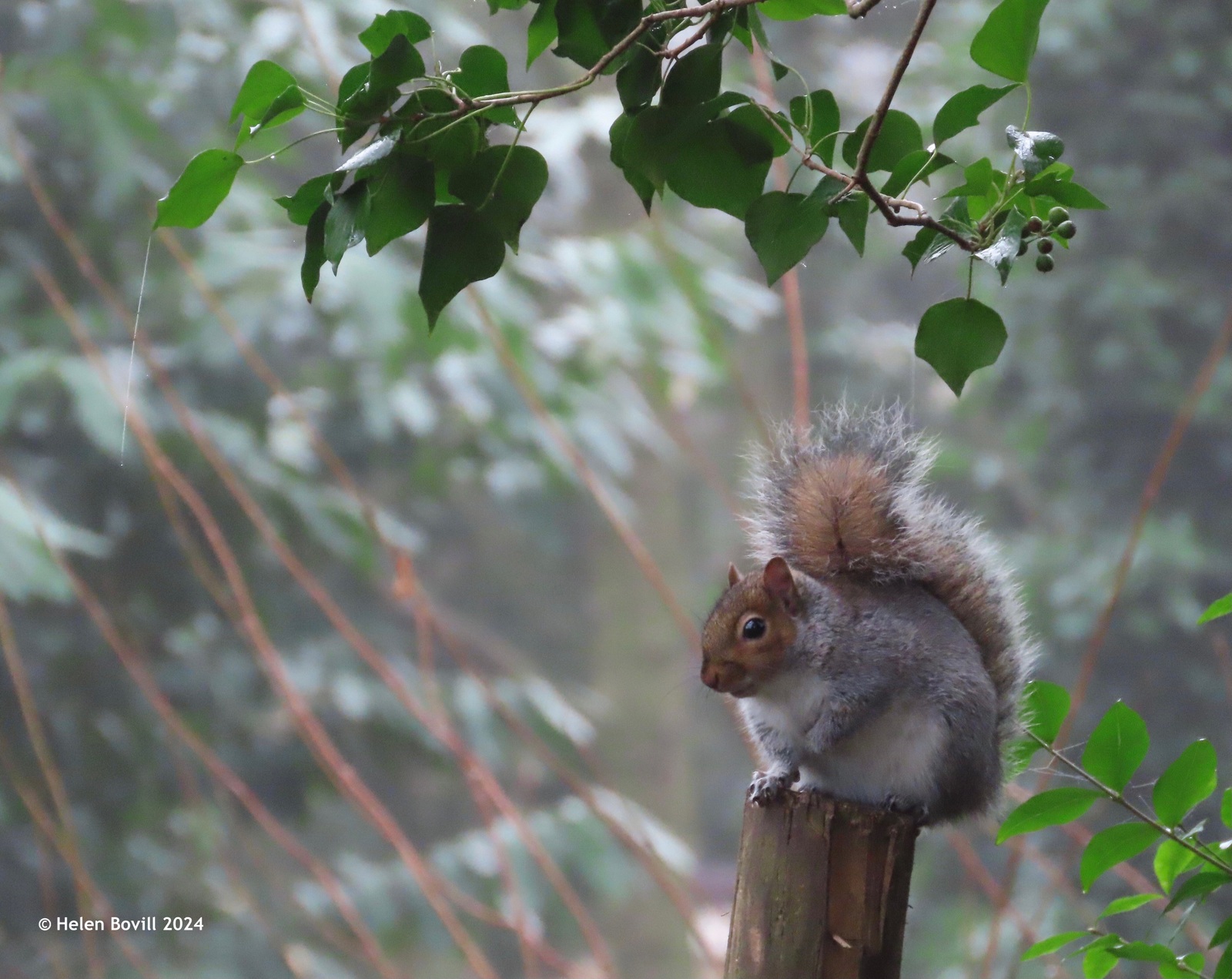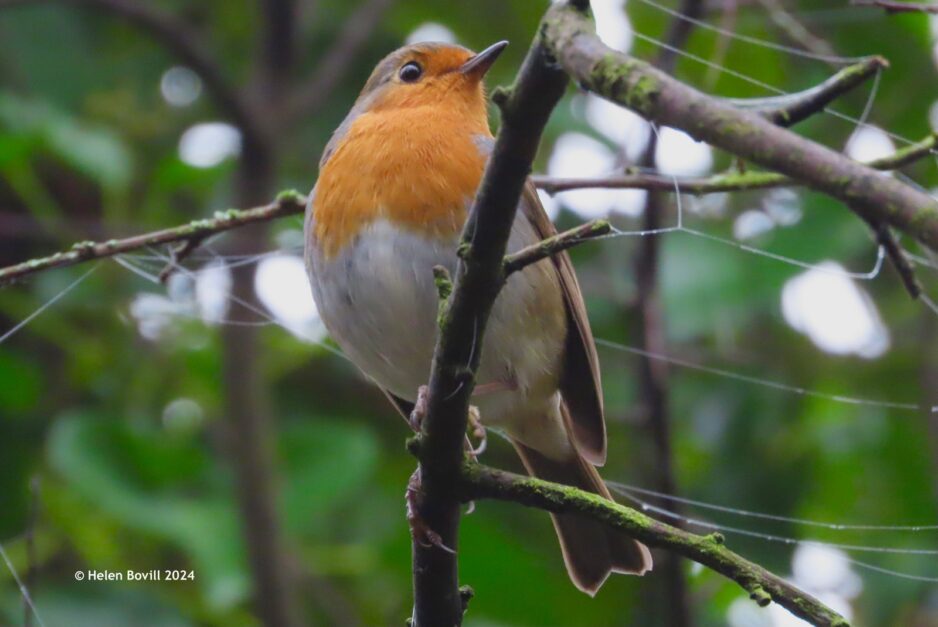By Helen Bovill, Volunteer
December was a month of contrasts, containing sunshine, cool dull weather and a named storm Darragh, resulting in a medium-sized tree coming down. The volunteers quickly removed the thinner branches that were lying across the path. The rest of the tree will remain as it fell, providing excellent habitat for the cemetery wildlife.

Just after Christmas there were three consecutive days of fog. The air was still and very damp, and as I walked around the cemetery there was a constant dripping sound as the droplets of water fell from the trees. The fog wasn’t particularly thick though and the birds were still visible.
Birds
During one such foggy day I was thrilled to see a Pied Wagtail walking along one of the paths. This is quite a common species in Hull, and I’ve seen them in Pearson Park and West Park. But this was the first time I’d ever seen one in the cemetery.
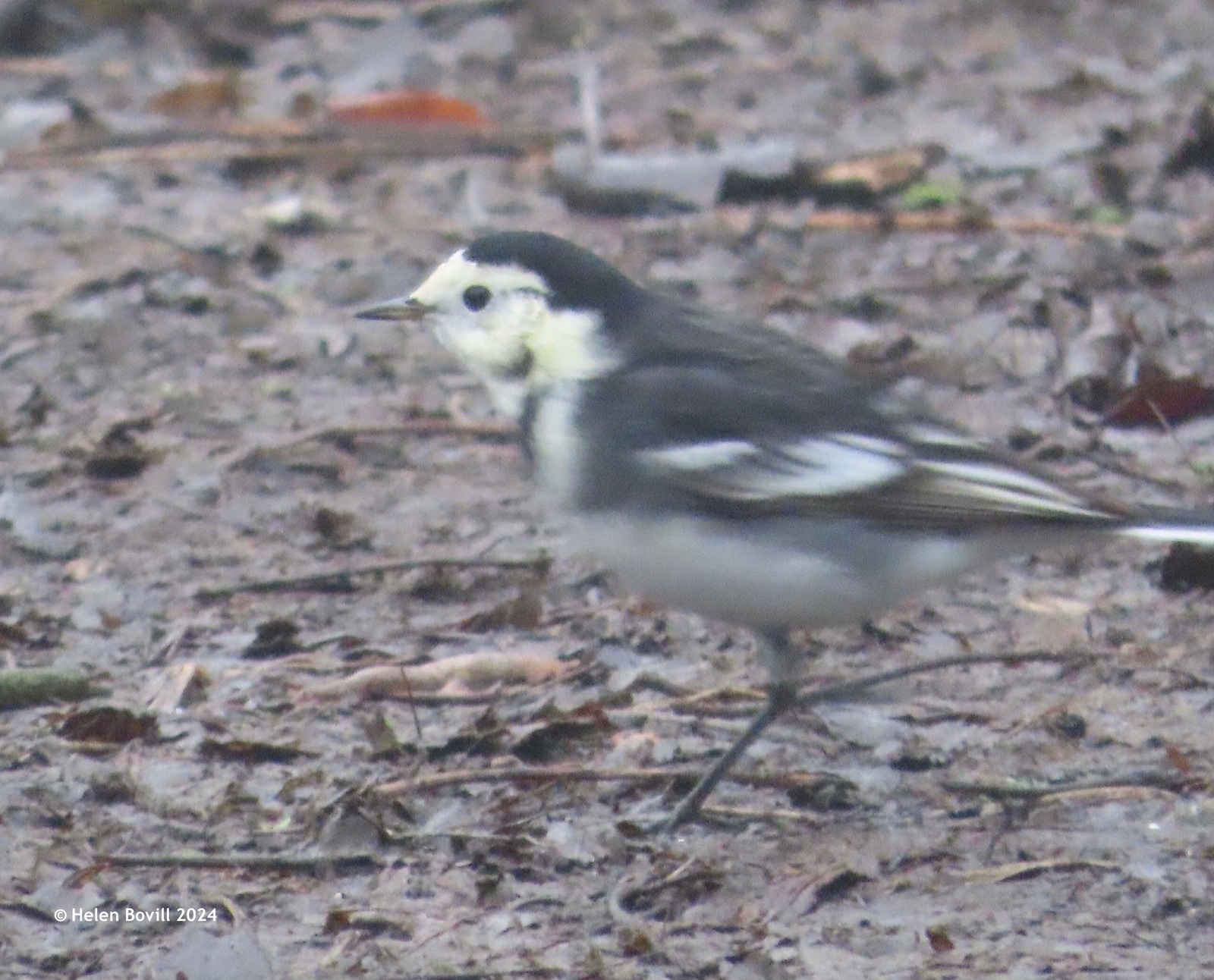
On several days I saw a group of more than a dozen Carrion Crows feeding on the ground just inside the cemetery gates. I noticed that several of them had some much lighter tail and wing feathers. There’s a population of them in West Park, about half a mile from the cemetery, and several of them also have these lighter feathers. It’s therefore likely these are the same birds.
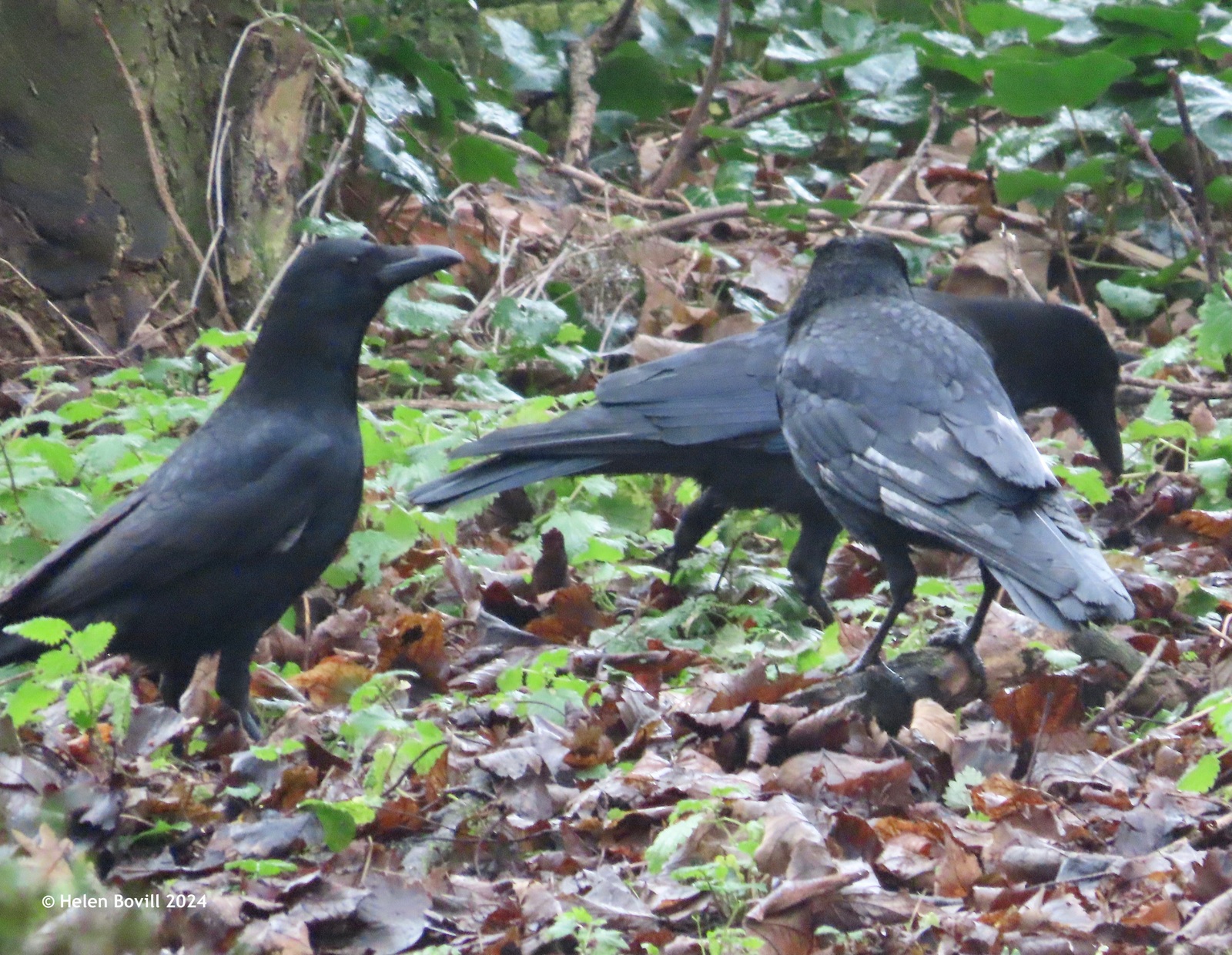
I noticed during those cold foggy days how the birds fluffed up their feathers to keep warm.
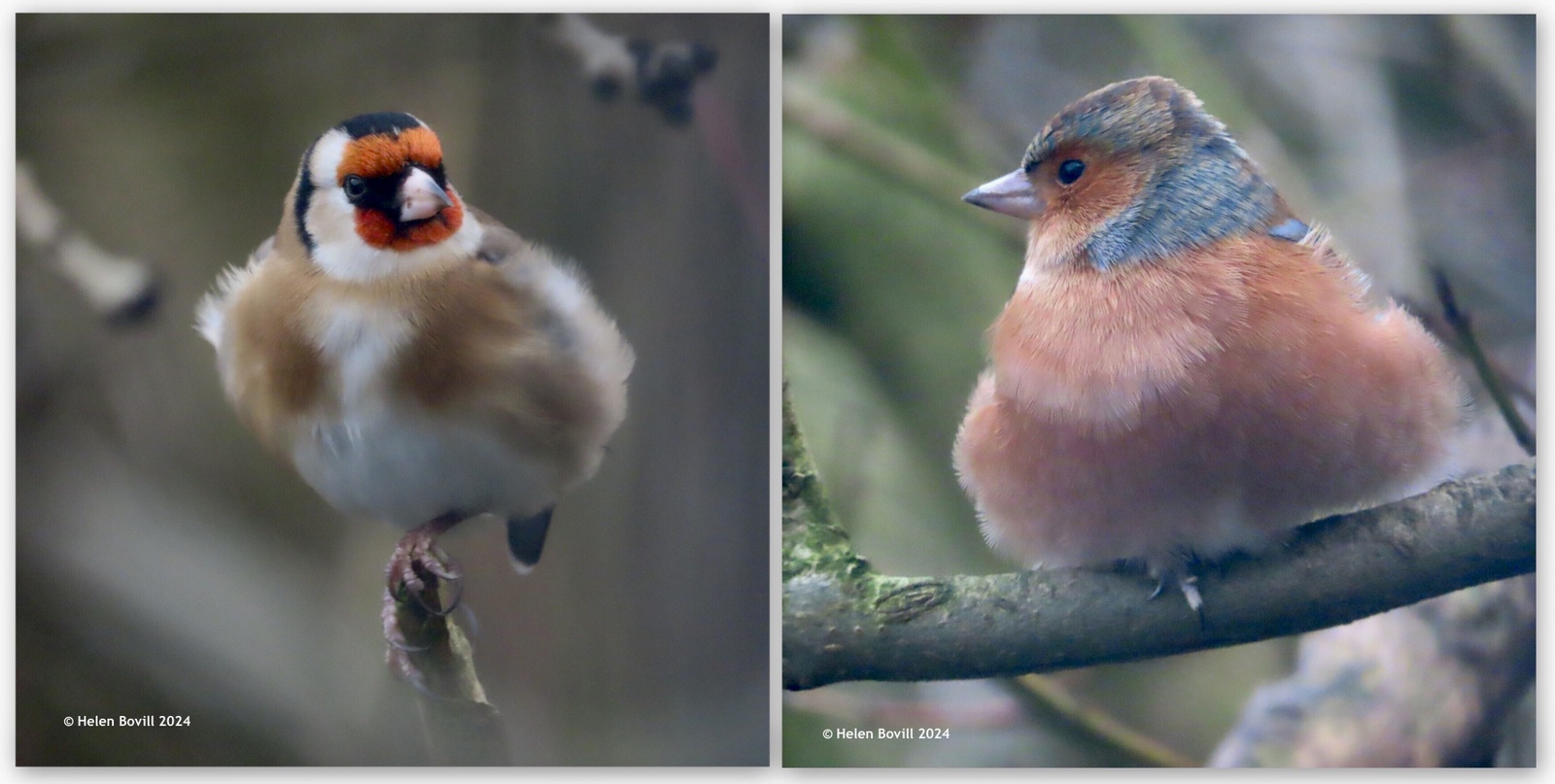
Nest Box Survey
In mid-December Bill, Dennis and I did the annual checking and cleaning out of the bird boxes. We actually did it on the same day as last year. December seems to be the ideal month for it – too late for birds to still be on the nest, but too early for them to have started building new ones.
We should now have a total of 52 boxes but we were only able to locate and check 50 of them. Of those 50, 30 had nests or other nesting materials in them, giving an occupancy rate of 60%, an improvement on last year’s result of 52%. I’ve counted both Owl boxes as having been used, and this year one was definitely used by Tawny Owls as I saw them and their two owlets back in May.
The cemetery occupies a long, regular sized area of land and it divides up nicely into two parts – the western end and the eastern end. There are 26 boxes in each end and we only managed to locate 25 in each end. When I checked the occupation rates again, but for each end separately, the results were very interesting. 20 of those 25 boxes had been used in the western end, giving an occupation rate of 80%. But only 10 of the 25 boxes in the eastern end had been used, giving an occupation rate of just 40%. It seems the western end of the cemetery is the most attractive to our bird population.
Nests and Materials
Nest-wise, there were some real beauties nestled snugly in those boxes.
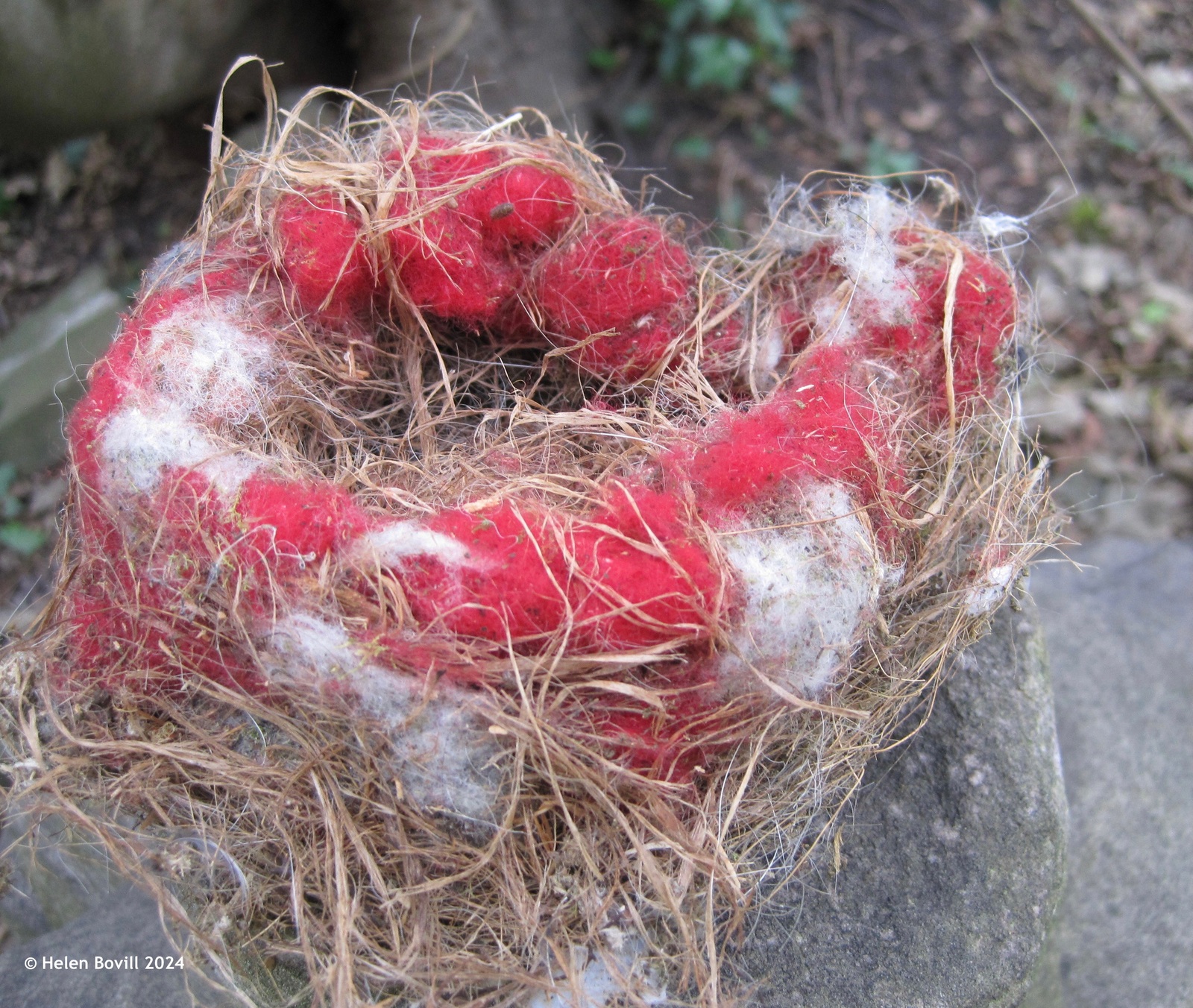
The red material is from the felt poppies the volunteers place on the graves of war casualties each November. Birds can start nesting as early as February and can continue into late Summer, so this will be from the 2023 poppies. The white material is synthetic, identifiable as such by the cut ends of the fibres. The ends of natural fur and hair taper to a point.
Many of the nests and boxes had woodlice in them – dead and living.
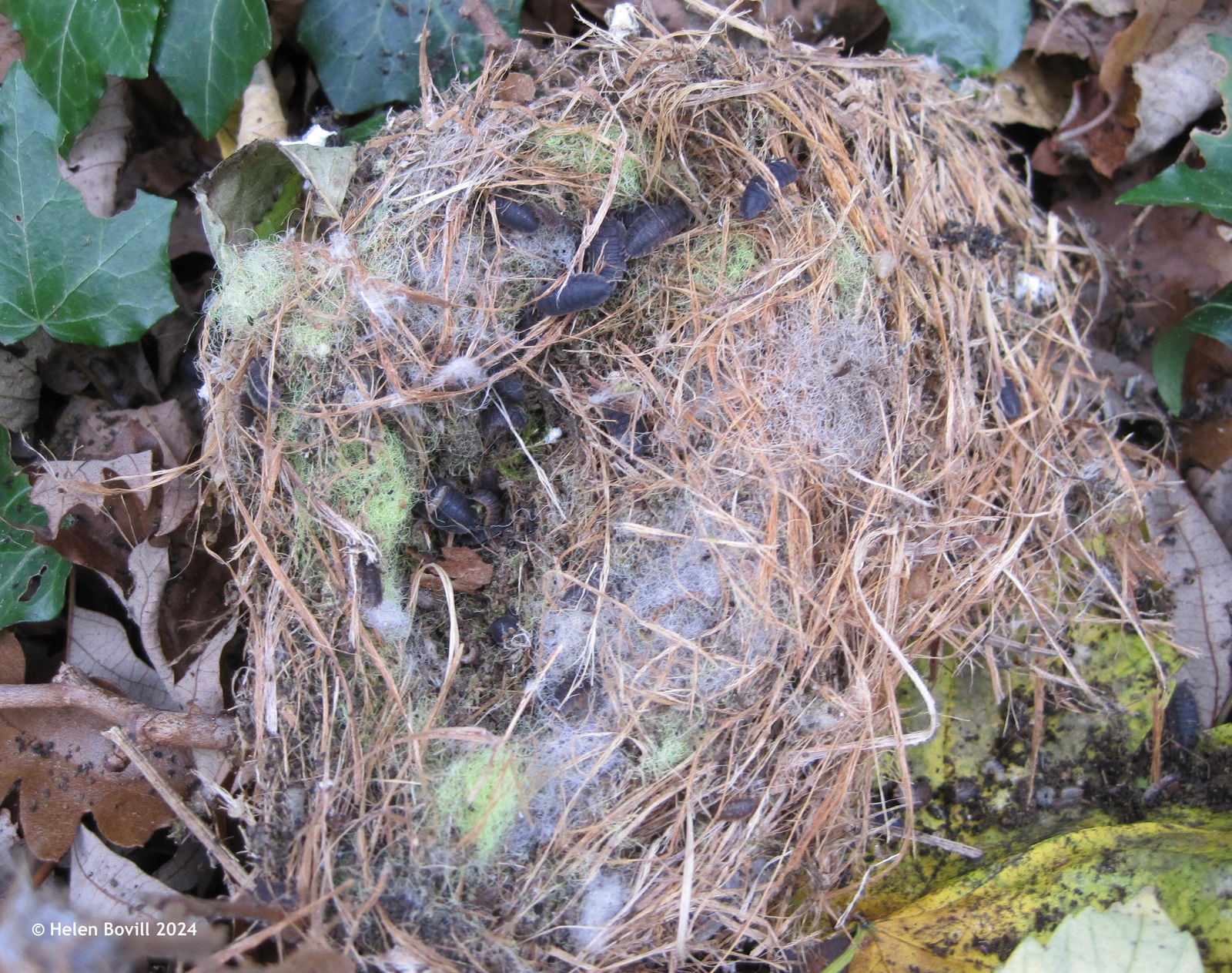
Artificial material has been used in this one too. The light green fibres could be from lost tennis balls their canine owners had failed to “fetch” successfully.
Some nests were made of just natural material though.
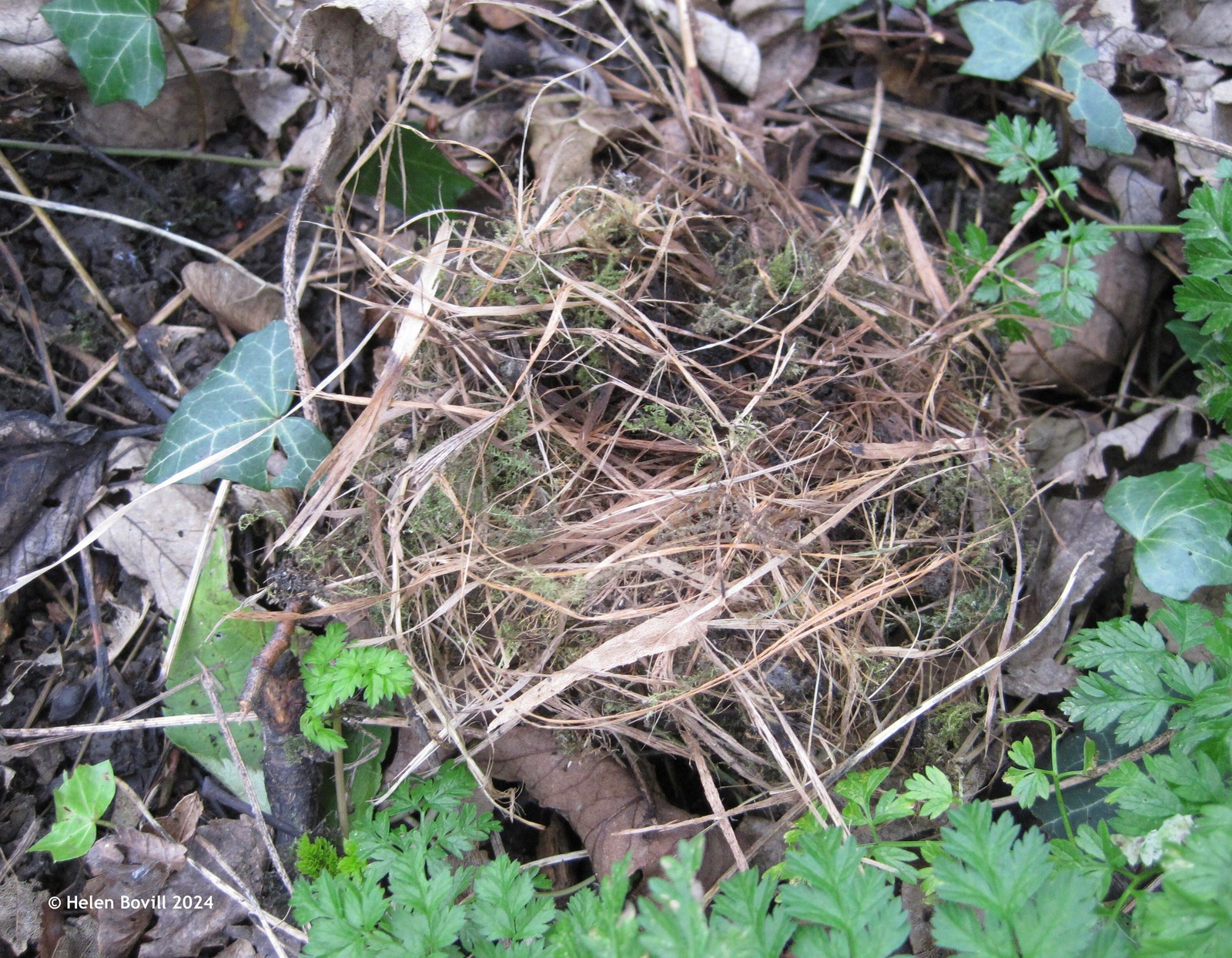
Note that in all three nests, dried plant stems are the main materials used.
We also found tiny skeletons in two of the boxes, suggesting these birds had perished early in the nesting season. Another nest had a couple of dead chicks in it, with feathers indicating they were Blue Tits. I wonder if these dead chicks were the result of a second or third brood from much later in the season, when food supplies were starting to dwindle? Or maybe one or both parents had died before the chicks fledged?
Plants
There was hardly anything in flower this month apart from a few Dandelions on the verge alongside the cemetery. But a week before Christmas I found a snowdrop in flower in the Quaker Burial Ground.
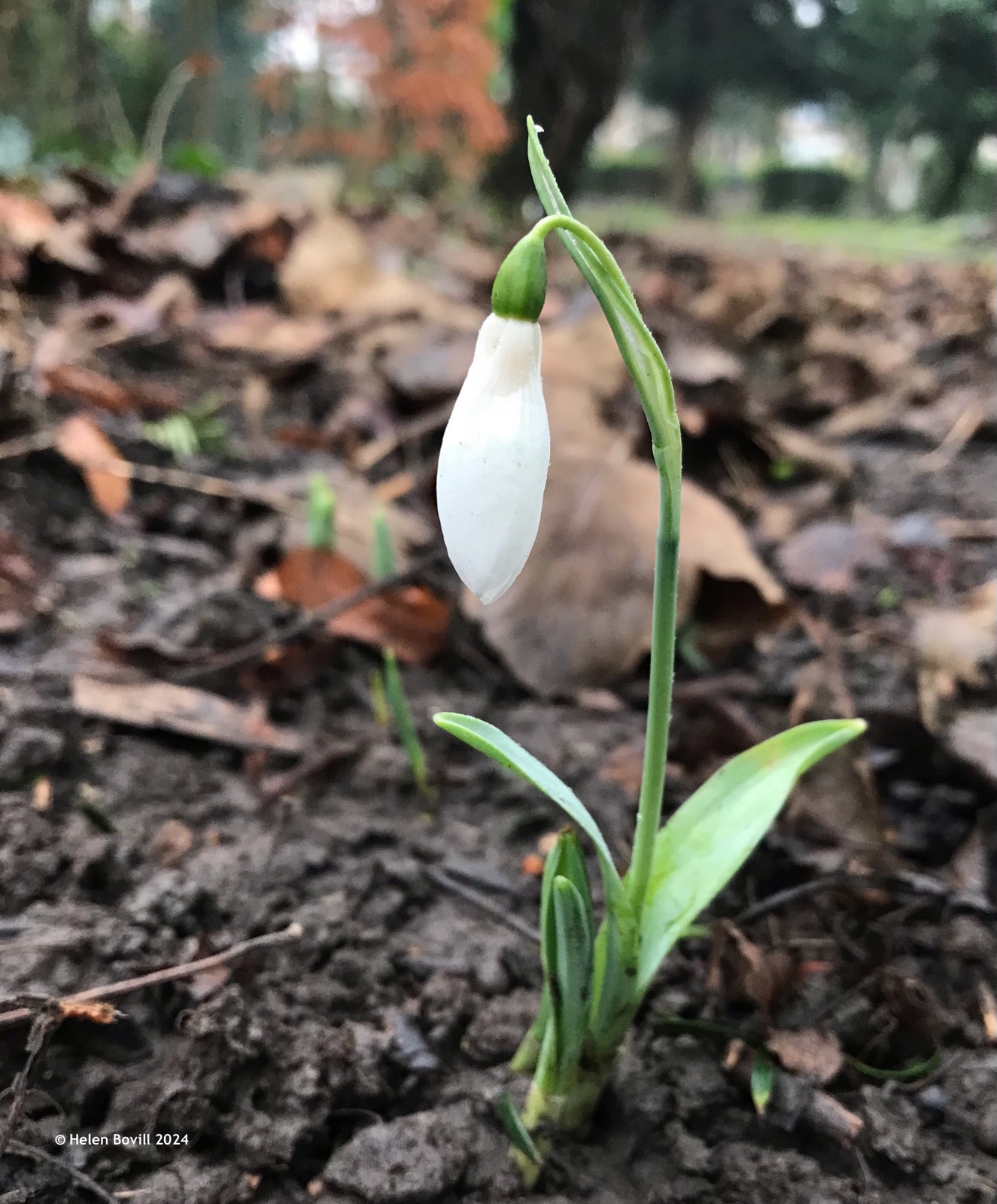
I was also very surprised to see a Lesser Celandine in flower just after Christmas.
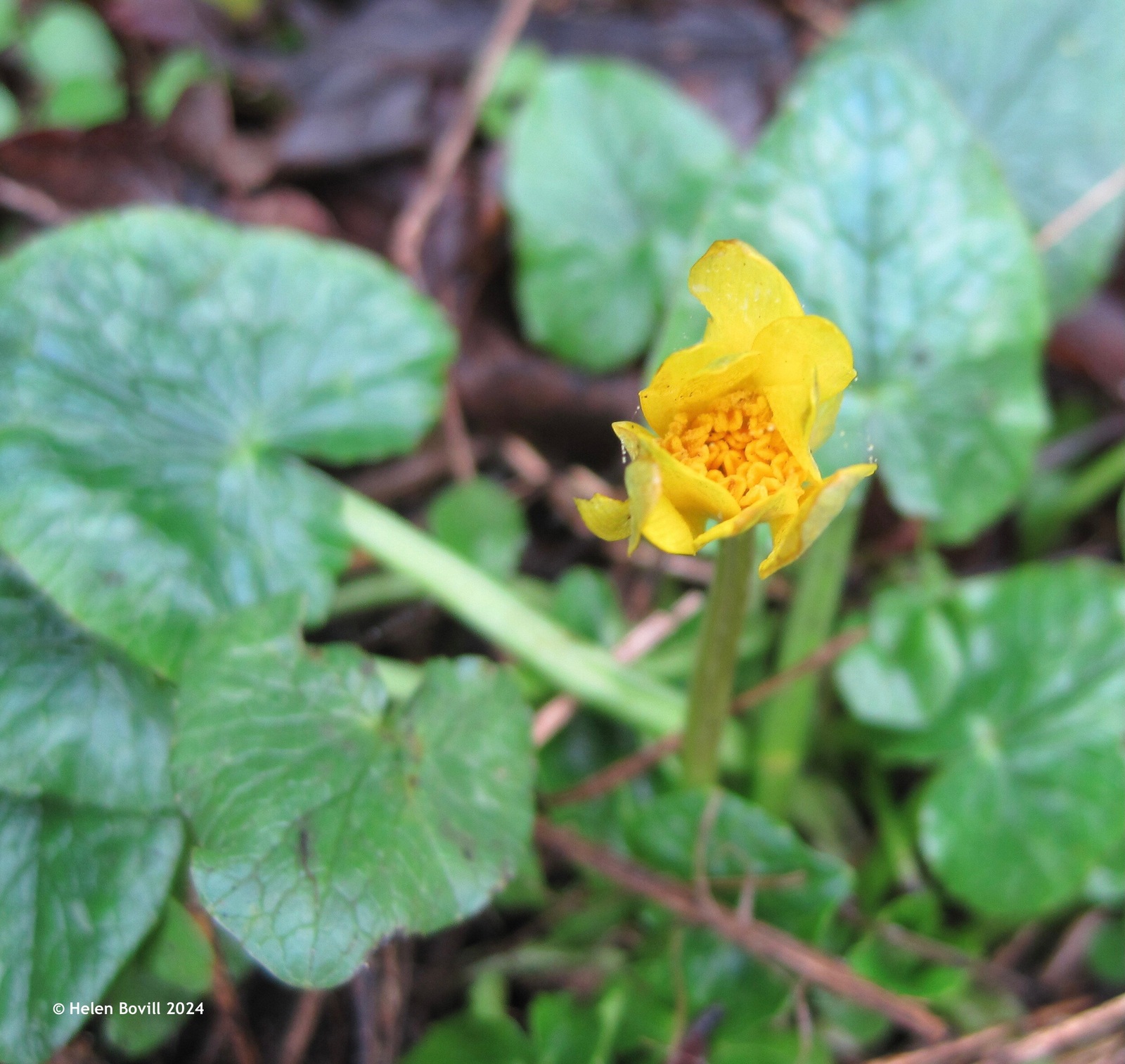
There were plenty of berries on some of the plants, including on the Holly, Berberis, Pyracantha and Japanese Skimmia. Good food for the cemetery wildlife.

The most abundant supply of berries was on the Ivy. The Wood Pigeons and Blackbirds seem particularly fond of these.
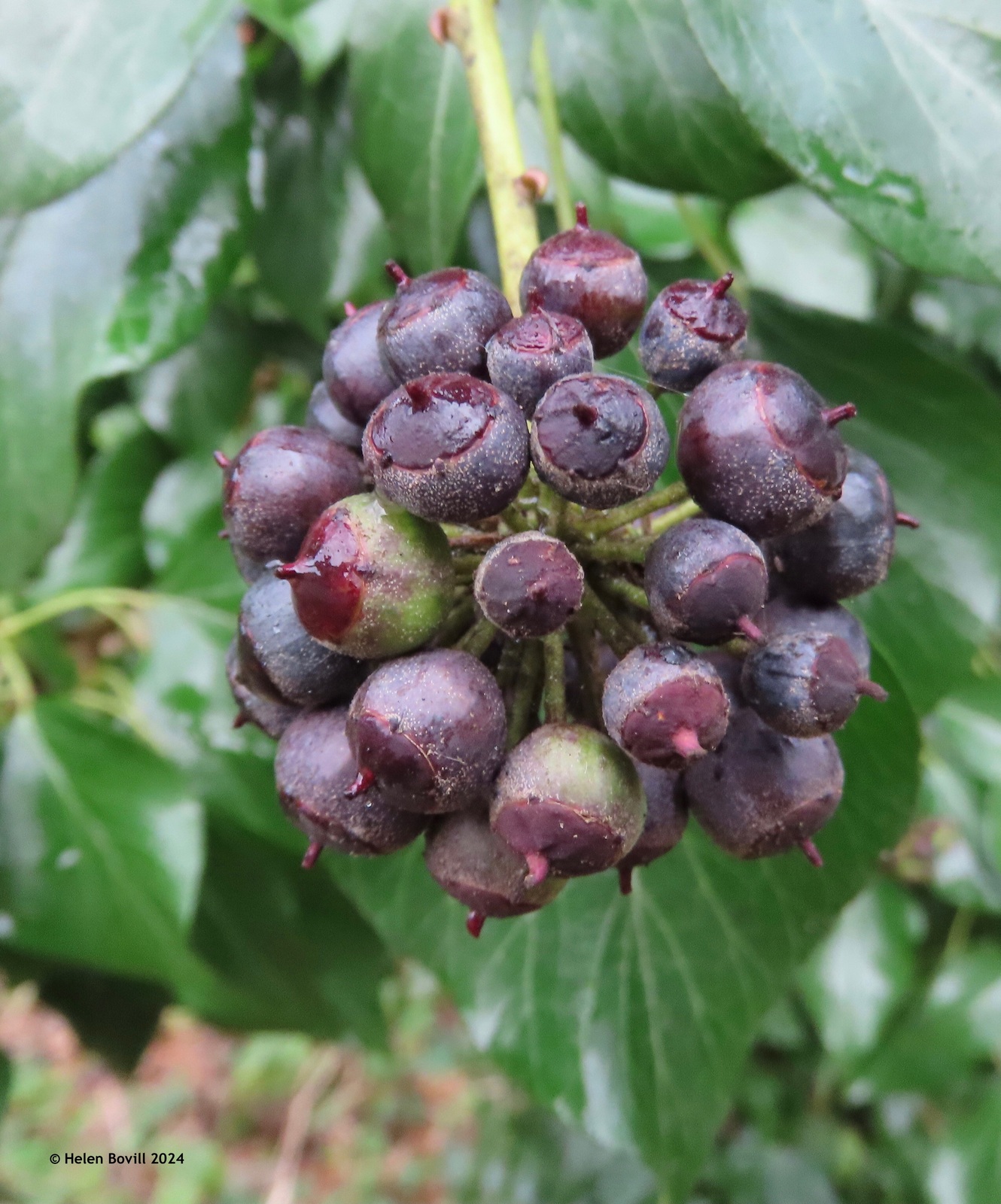
Fungi
I found Velvet Shank in a few places, including on this mossy tree stump. Some appear to have been nibbled by the cemetery wildlife.
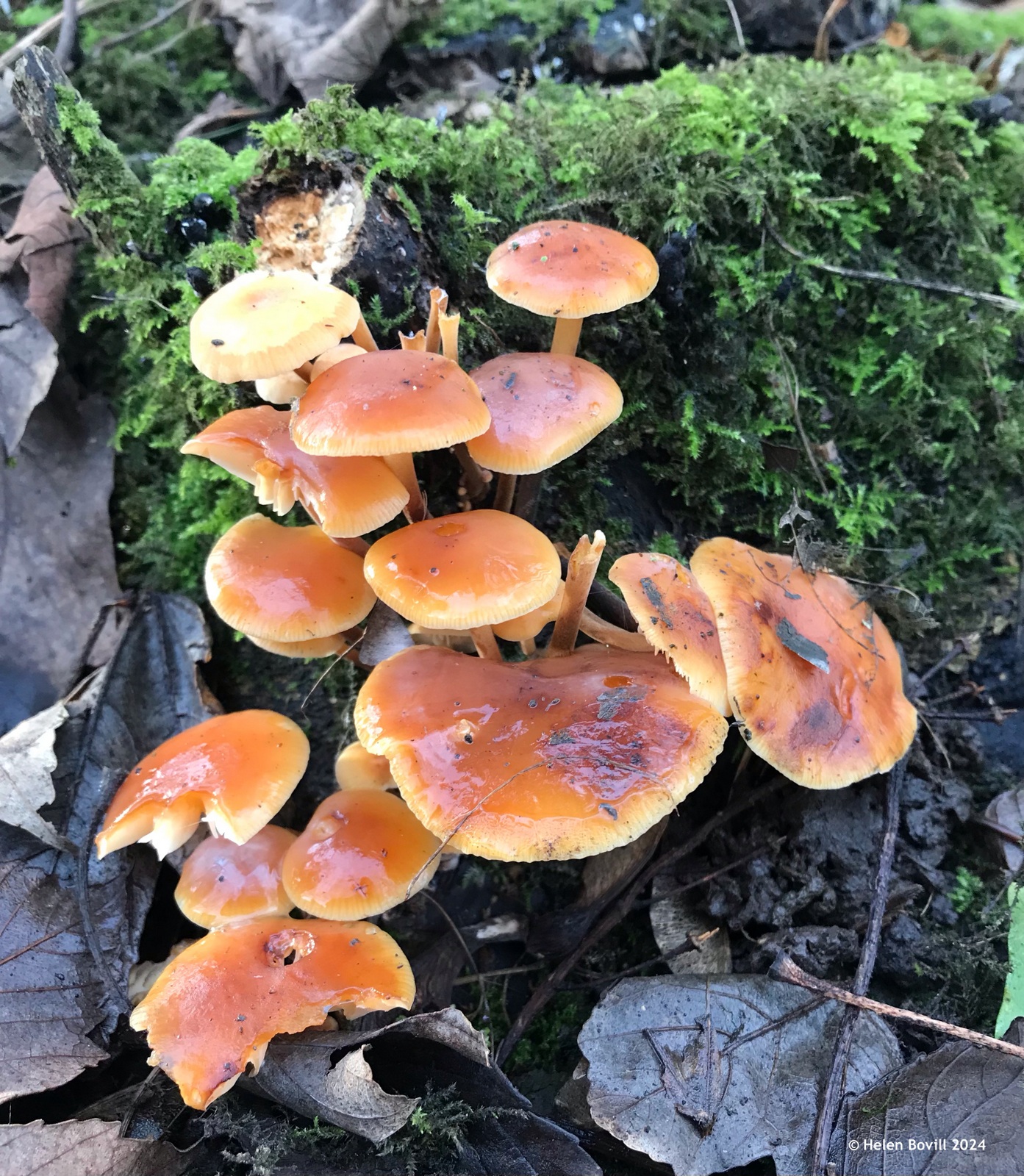
I also found some I’d never seen before. I think both are types of Stereum.
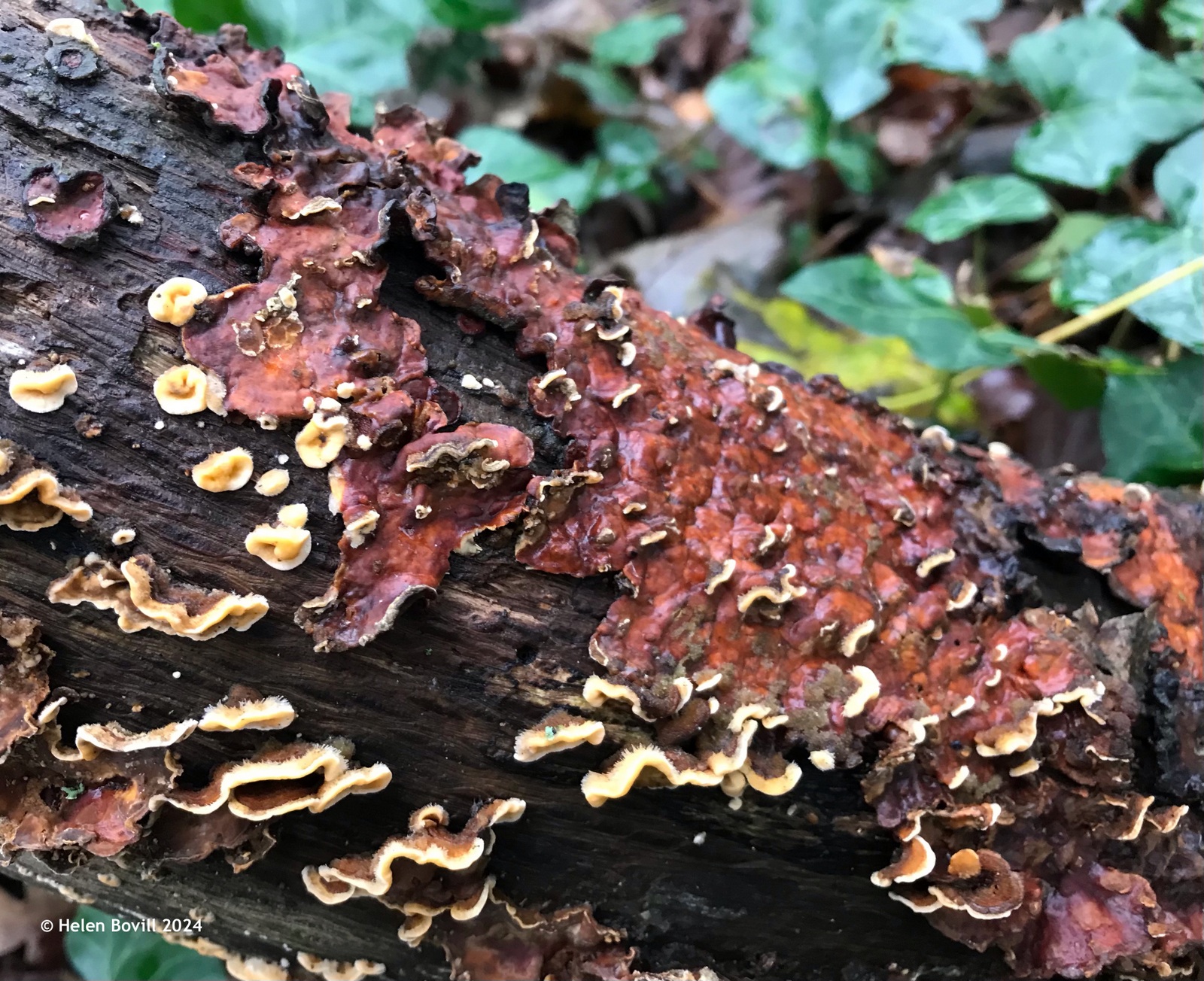
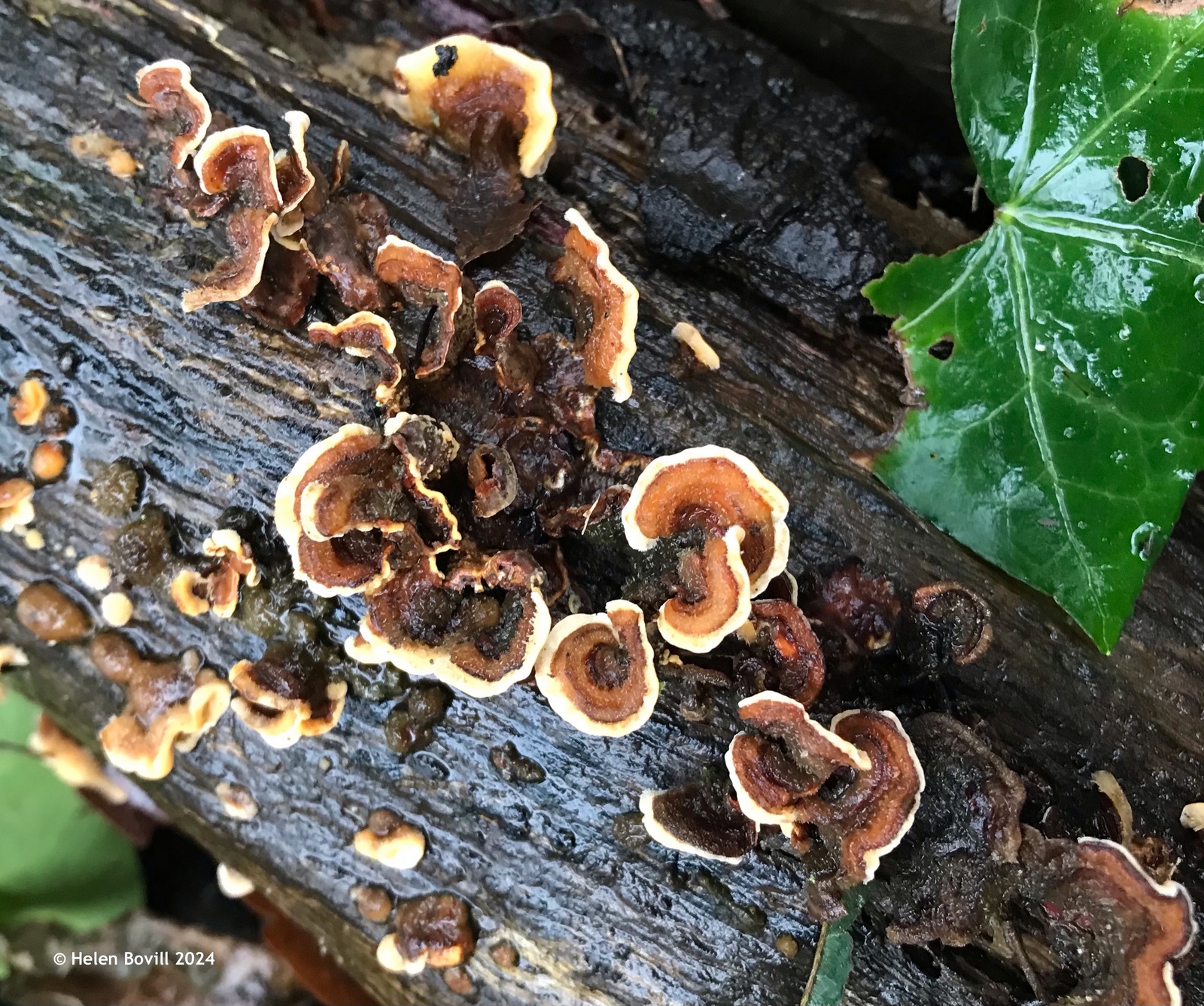
Conclusion
Overall it was quite a mild month, with no frosty days as far as I can recall. The insect branch of the cemetery wildlife was largely absent. It was nowhere near as wet as last December, and the footpaths are still very easy to walk on with no large puddles to avoid.
